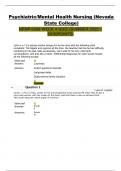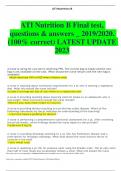Samenvatting
Samenvatting Cognitive Psychology, ISBN: 9780077122669 voor Neurofilosofie & Cognitieve Psychologie
- Instelling
- Universiteit Van Amsterdam (UvA)
- Boek
- Cognitive Psychology
Samenvatting van de benodigde leesstof voor het vak neurofilosofie en cognitieve psychologie
[Meer zien]














